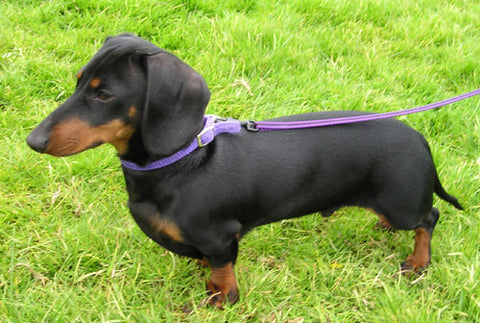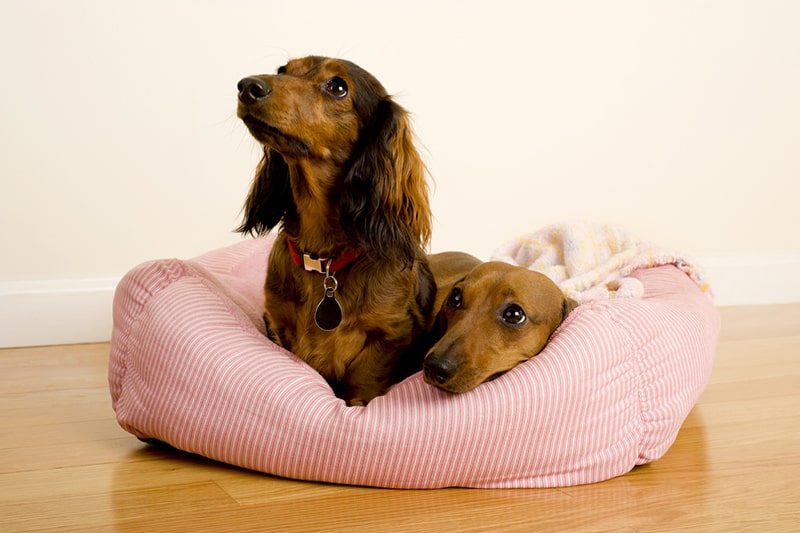Contents
The Beginnings of the Dachshund

Historical Origins
The dachshund’s roots trace back to 15th-century Germany. Bred for hunting, these dogs specialized in tracking and flushing out badgers—hence their German name, Dackel, meaning “badger dog.”
Early Characteristics
Early dachshunds were larger and rugged, with long bodies and short legs ideal for navigating burrows during hunts.
Evolution of the Breed

Development Over Time
Over the centuries, dachshunds were refined to suit various types of game, such as wild boars and foxes. This led to the development of three distinct coat types:
- Smooth
- Wirehaired
- Longhaired
Global Popularity
In the late 19th century, the breed reached England, where it was standardized and gained widespread admiration. By 1885, the Dachshund Club of America was established, cementing the breed’s international appeal.
Symbol of German Pride
During World War I, dachshunds symbolized German pride and were featured in propaganda. Though their popularity dipped in the United States due to wartime associations, they rebounded by the 1950s and remain a favorite breed globally.
Unveiling the Dachshund’s Unique Physique

Long Body
Dachshunds’ elongated bodies are perfect for maneuvering through tight spaces. Their spines are flexible yet prone to conditions like intervertebral disc disease (IVDD), making back care essential.
Short Legs
Their short, sturdy legs were bred for digging and burrowing, crucial for hunting duties. Though seemingly disproportionate, these legs provide balance and strength.
Other Features
- Chest: Well-developed and deep.
- Ears: Long and droopy, aiding scent detection.
- Coat: Smooth, wiry, or long, in various colors like red, black, chocolate, and dapple.
Dachshund Temperament
Energetic and Playful
Dachshunds balance bursts of energy with moments of calm, making them suitable for active families and cozy homes alike.
Loyal and Protective
Fiercely loyal, dachshunds are excellent watchdogs. However, early socialization is vital to manage their wariness of strangers.
Independent but Stubborn
Their independent nature makes them charming yet stubborn. Consistent training and company help prevent separation anxiety and destructive behavior.
Dachshund Care
Nutrition
A balanced diet is crucial to prevent obesity, a common issue that exacerbates back problems. Treats should be given sparingly.
Exercise
Daily walks or low-impact activities like swimming are ideal. Avoid jumping or climbing stairs to protect their spines.
Health
Regular vet check-ups are vital. Watch for:
- IVDD
- Obesity
- Dental issues
Popular Dachshund Varieties
Smooth
- Coat: Short, shiny, and low-maintenance.
- Personality: Friendly and outgoing.
Wirehaired
- Coat: Harsh and wiry, requiring grooming.
- Personality: More reserved but affectionate.
Longhaired
- Coat: Soft and elegant but high-maintenance.
- Personality: Calm and loving.
Celebrating Dachshunds in Popular Culture
Famous Dachshunds
- Snoopy: The iconic Peanuts character.
- Slinky Dog: From Toy Story.
- Crusoe: A celebrity dachshund with a massive online following.
In Fashion and Advertising
Dachshunds’ distinctive silhouette features in designs, apparel, and advertising campaigns, cementing their status as cultural icons.
Conclusion
Dachshunds are much more than their adorable “sausage dog” nickname. With a history rooted in hunting, a unique physique, and a lovable personality, they’ve earned their place as one of the world’s most cherished breeds.
Whether you’re a seasoned owner or considering adopting, understanding their history, characteristics, and care needs ensures a happy life for this remarkable companion. So next time you see a dachshund waddling by, take a moment to appreciate their enduring legacy and charm.
